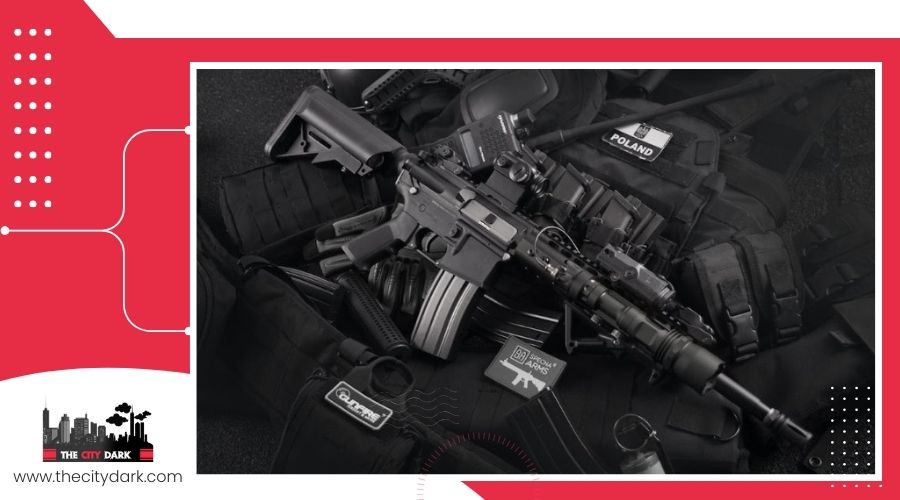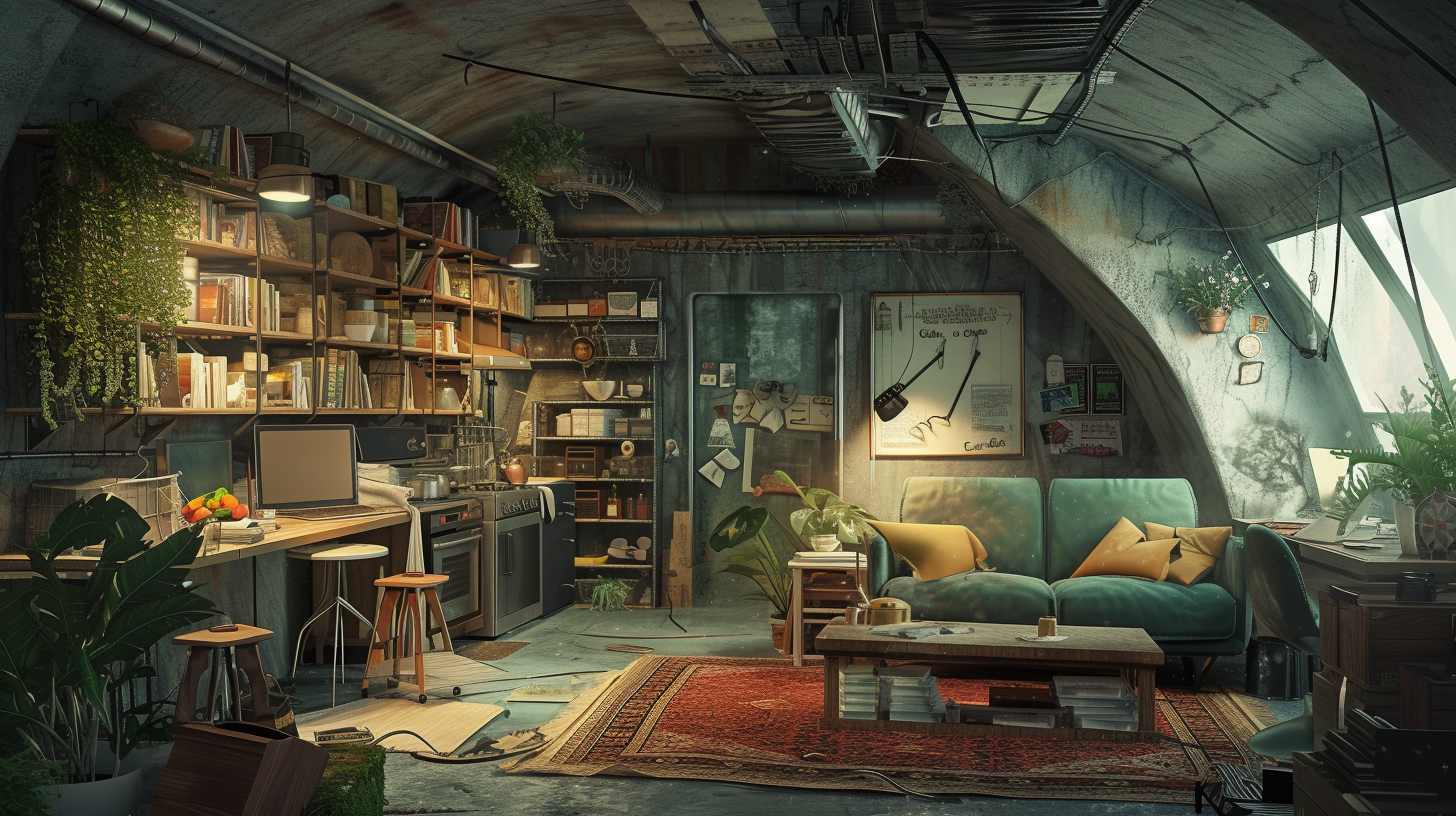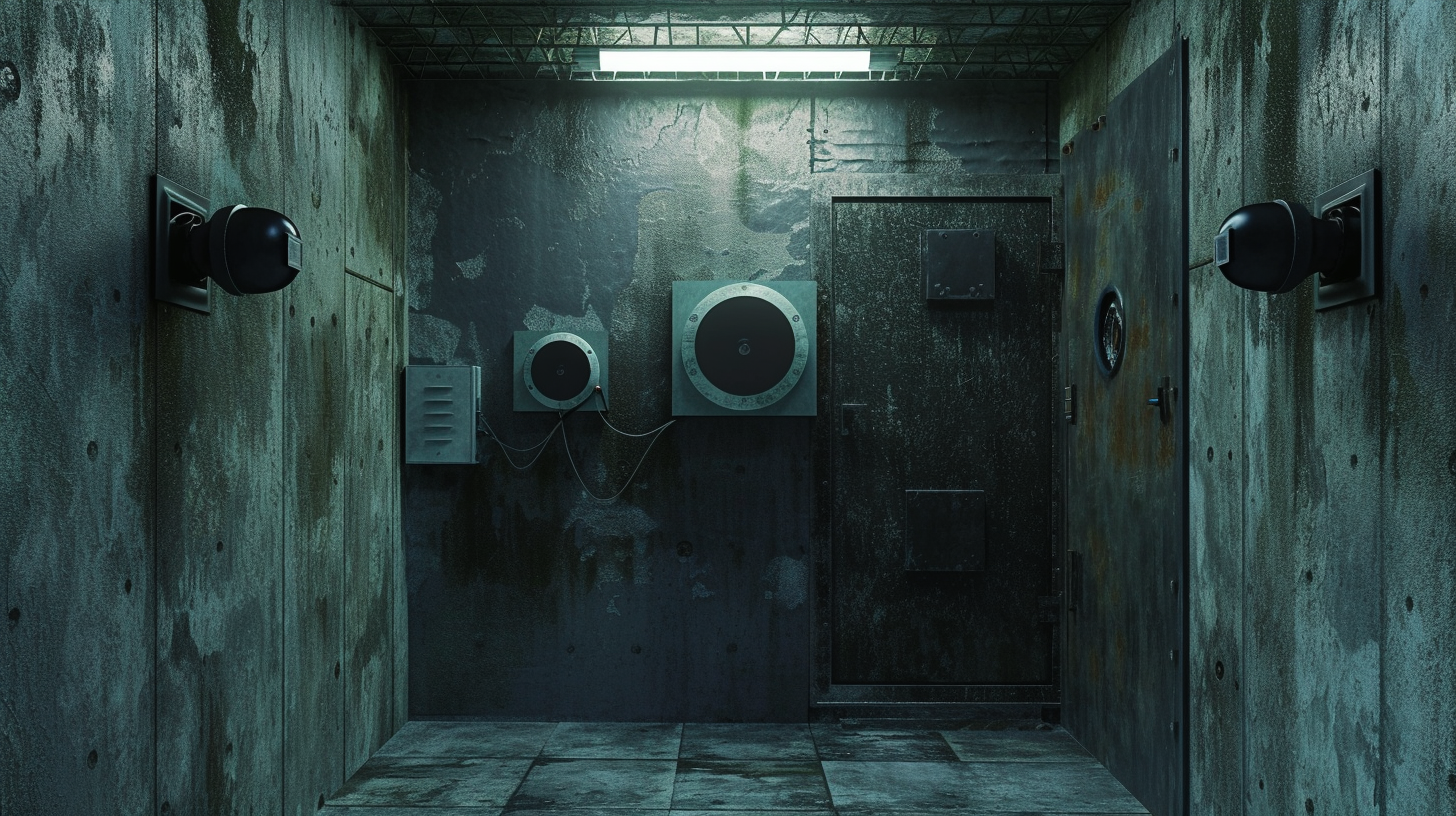How Far Underground Does a Bomb Shelter Need to Be?
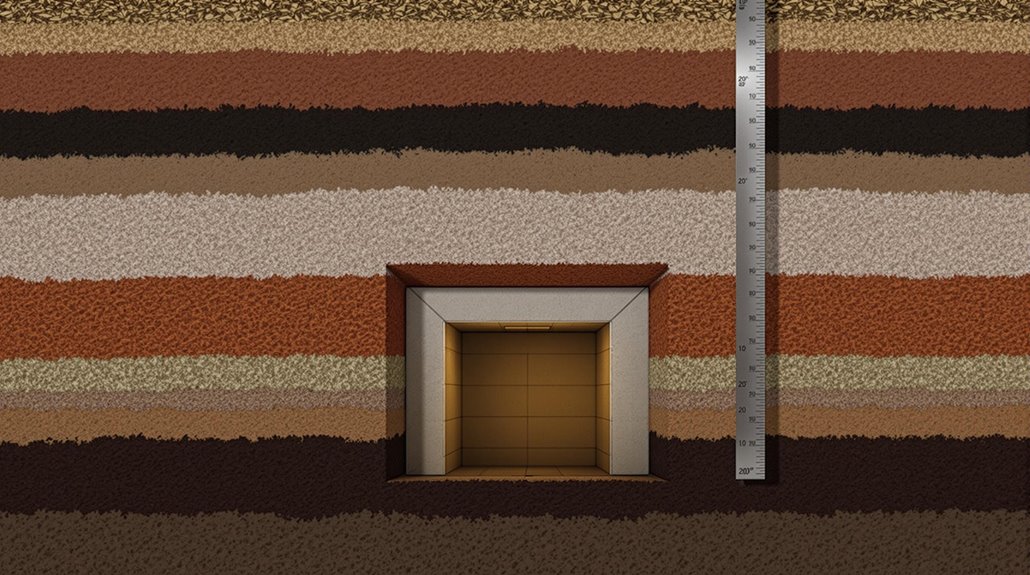
You'll need to build your bomb shelter at least 10 feet underground for basic protection against nuclear threats, though 20-25 feet provides vastly better safety. The soil type matters - clay-rich soil needs 8-10 feet of coverage, while sandy soil requires 12-15 feet.
For maximum protection against radiation and blast waves, consider going 30-40 feet deep. Several key factors can influence your ideal shelter depth and safety requirements.
Minimum Depth Requirements for Basic Protection
The most critical minimum depth requirement for a basic bomb shelter is 10 feet underground. When you're building a bunker, this depth serves as the standard baseline for protection against nuclear threats. At 10 feet below the surface, you'll have a reasonable shield against radioactive fallout, gamma radiation, and alpha particles that could otherwise pose severe health risks. Your underground shelter's positioning at this depth also provides pivotal protection from the intense blast waves that follow a nuclear detonation.
While the specific circumstances of an attack might require adjustments to this guideline, maintaining at least 10 feet of earth between your shelter and the surface will give you indispensable radiation protection. Remember that this depth requirement is just one aspect of creating an effective fallout shelter - it's the minimum starting point for basic safety.
Using reinforced concrete walls with proper steel reinforcement will further enhance your shelter's structural integrity against both blast effects and radiation exposure.
Optimal Depth Ranges for Maximum Safety
While basic protection starts at 10 feet underground, you'll achieve maximum safety by building your shelter between 20-25 feet below the surface. This depth range offers reliable protection from both blast waves and initial radiation from a nuclear weapon.
For enhanced security against gamma radiation, you'll want to consider positioning your underground bunker at 30-40 feet deep. However, if you're planning fallout shelters for long-term survival following a nuclear attack, going even deeper to 50 feet or more provides superior protection. The soil's natural heavy shielding properties help absorb and scatter harmful radiation.
Remember that your shelter's preferred depth can vary depending on specific factors, including the type and size of the nuclear attack you're preparing for. When in doubt, deeper placement generally offers better protection.
Shock-absorbing materials and reinforced concrete construction are essential elements to incorporate at any depth for maximum structural integrity during seismic events.
Soil Types and Their Impact on Shelter Depth
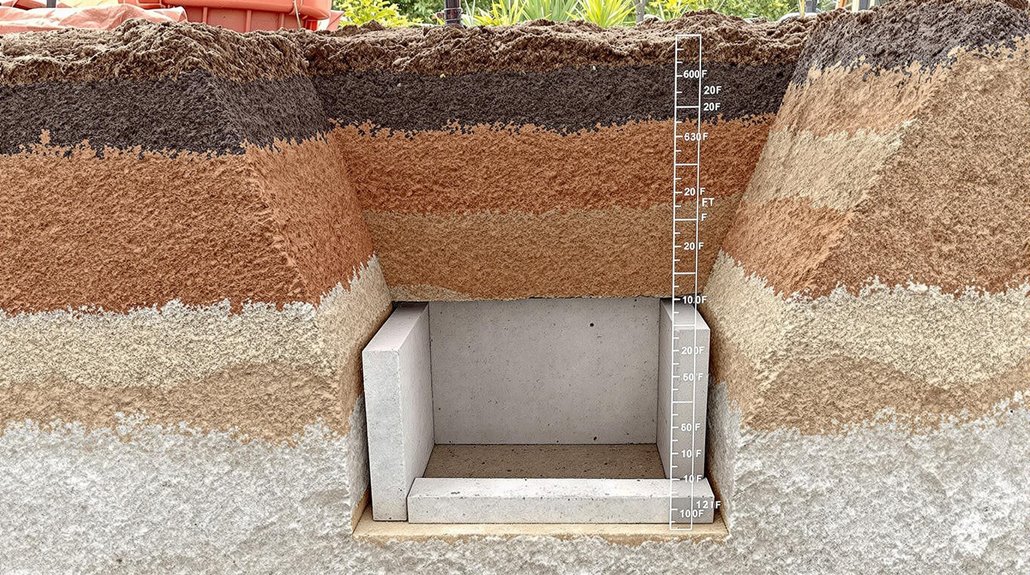
Different soil compositions play an essential role in determining your shelter's ideal depth. For a basic fallout shelter, dense soil types like clay and compacted earth provide better protection against gamma radiation and radioactive particles than loose, sandy soils. When you're building an underground bunker, you'll need to dig deeper in sandy or gravelly soil to achieve the same level of protection as you would with clay-rich earth.
Dense soil can effectively shield a nuclear bunker and protect its occupants with less depth requirements. Clay-rich soil typically needs only 8-10 feet of coverage, while sandy soil might require 12-15 feet to offer equivalent protection. You'll also want to ponder soil stability - some types may need additional reinforcement to prevent collapse and maintain structural integrity over time. Safe room guidelines from FEMA recommend considering soil composition when planning underground shelter construction for maximum protection against disasters.
Blast Wave Considerations and Underground Positioning
Understanding blast wave characteristics is critical when determining your shelter's underground positioning. When planning protection from a nuclear explosion, you'll need to place your shelter at least 10 feet below ground for minimal safety. However, you'll gain substantially better protection at 20-25 feet deep, as this depth better shields you from the initial blast wave.
For extensive protection against nuclear fallout, including gamma radiation and alpha particles, you should consider positioning bomb shelters 30-40 feet underground. If you're aiming for maximum safety and reduced radiation dose, depths of 50 feet or more provide exceptional protection. The soil above your shelter acts as a natural barrier against both the immediate effects of a nuclear bomb and subsequent radiation.
Remember that the ideal depth for your shelter depends on the anticipated size and type of nuclear threat. Cold War fallout shelters were typically constructed with reinforced concrete to provide additional structural integrity against extreme pressures.
Radiation Shielding at Different Depths
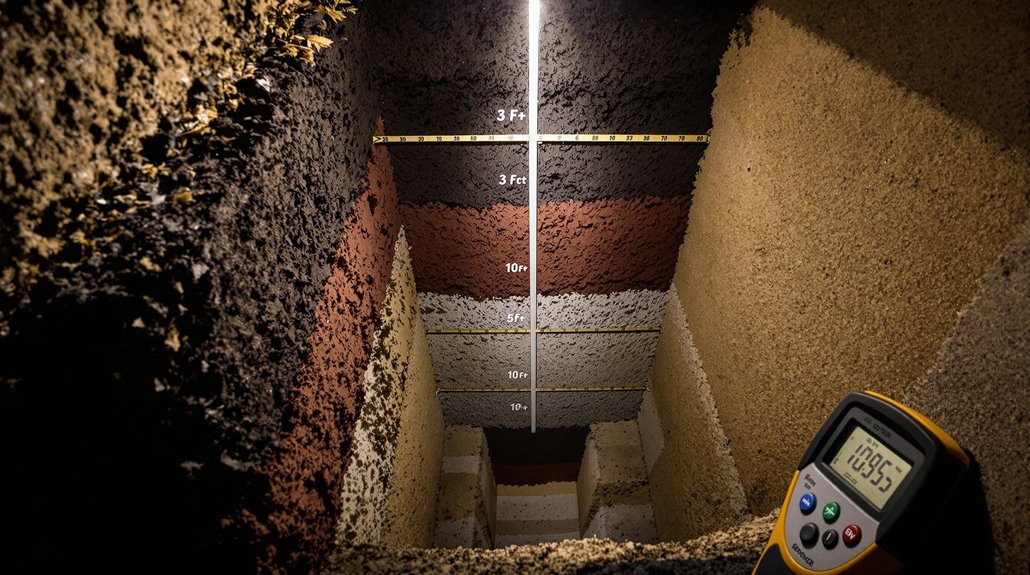
Because soil acts as a natural radiation shield, the depth of your bomb shelter directly impacts your protection level against nuclear fallout. Just three feet of soil can block 95% of gamma rays, but you'll need greater depths for thorough protection from radioactive material.
For maximum safety against both gamma rays and alpha particles, you'll want your shelter at least 30-40 feet below ground level. If you're planning for long-term survival, consider going even deeper - 50 feet or more provides superior protection from radioactive fallout and blast effects. The soil's composition matters too; earth rich in iron offers enhanced protection due to its superior penetrating power resistance.
Remember that your shelter's required depth may vary depending on specific nuclear threats, so it's worth considering local factors when planning your bunker's position.
Engineering Challenges of Deep Shelter Construction
Building a shelter at these protective depths presents substantial engineering obstacles you'll need to address. The Army Corps of Engineers recommends ensuring your structure is able to withstand immense soil pressure, groundwater infiltration, and seismic activity. Unlike a typical fallout shelter near the surface, deep installations require sophisticated ventilation systems and moisture barriers.
Key engineering challenges include reinforcing walls and ceilings with steel-fortified concrete thick enough to survive a nuclear blast's pressure wave. You'll need to ponder emergency exits, backup power systems, and protection from dangerous fallout that could seep through entry points. Water management becomes critical at greater depths, requiring sump pumps and drainage systems. The deeper you go, the more complex these systems become, drastically increasing construction costs and technical requirements.
Cost Analysis of Various Depth Options

The decision to construct a bomb shelter involves careful financial planning across multiple depth options. Civil Defense guidelines suggest that protecting against types of radiation requires varying depths, each with distinct cost implications. You'll find that a basic 10-foot shelter, equipped with a Kearny Air Pump, costs between $10,000-$20,000, offering minimal War Survival capabilities.
For improved protection against the amount of radioactive fallout, similar to shelters built during the Cold War in New York City, you'll need to dig 20-25 feet deep, costing $20,000-$50,000. Maximum protection comes at 30-40 feet, shielding against gamma radiation for $50,000-$100,000. If you're seeking ultimate security, 50-foot bunkers exceed $100,000 but provide thorough protection against all war-related threats.
Modern Weapons and Required Shelter Specifications
Modern nuclear weapons have dramatically altered the requirements for effective bomb shelter construction. You'll need to ponder different types of protection against both alpha and beta particles, with depths reaching up to 1,000 feet to withstand advanced warheads like the B83. In the event of a nuclear attack, you must account for the amplified destructive power of subsurface detonations, which can increase yield by 20 times when exploded just one meter underground.
Following Nuclear Regulatory guidelines, you should incorporate steel materials similar to those used in the Chernobyl Sarcophagus for radiation shielding. The deeper your shelter, the better protection you'll have against seismic effects and radiation. While a 5-meter depth offers some protection, modern weapons require considerably deeper installations with adequate water on hand for long-term survival.

